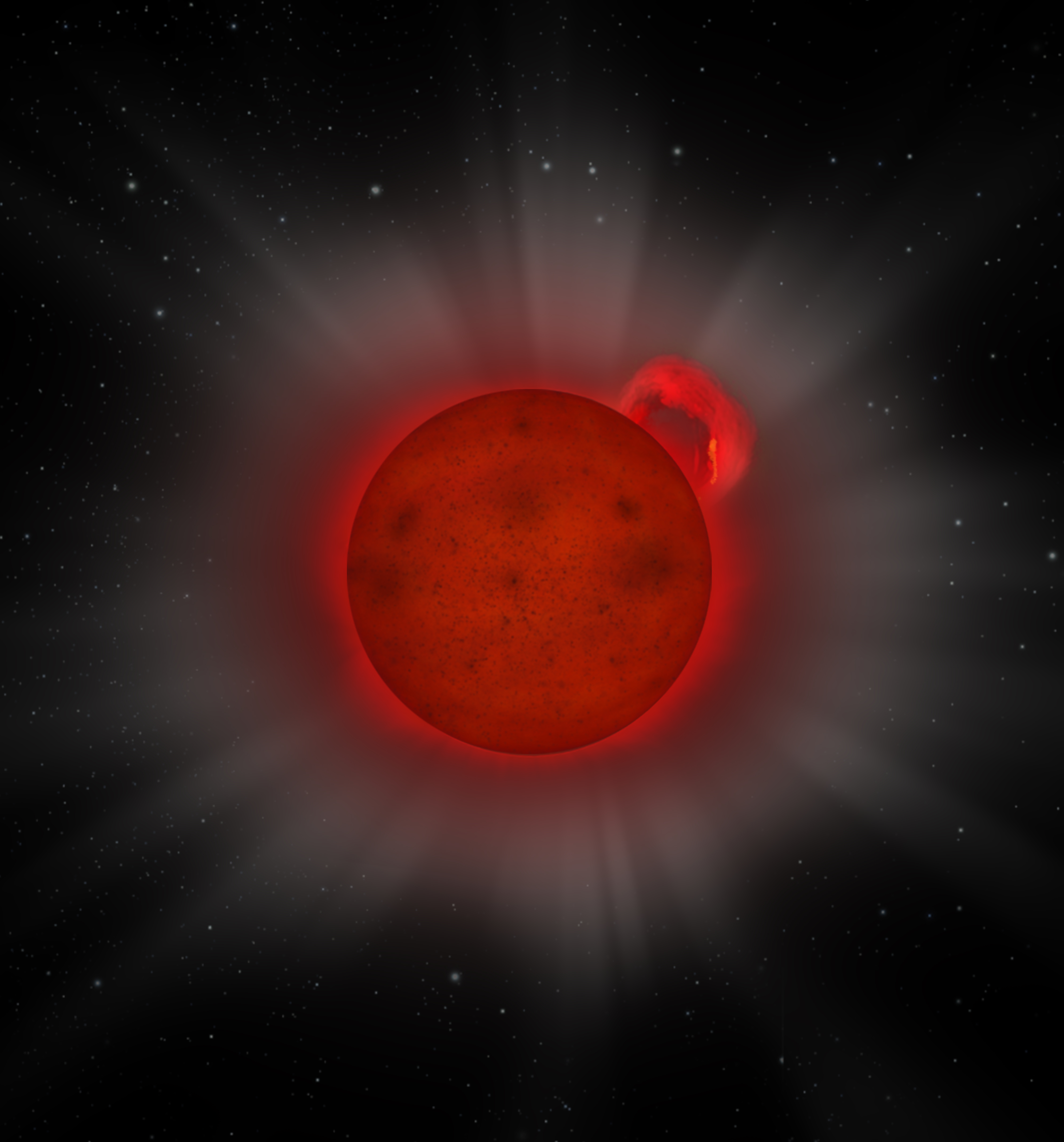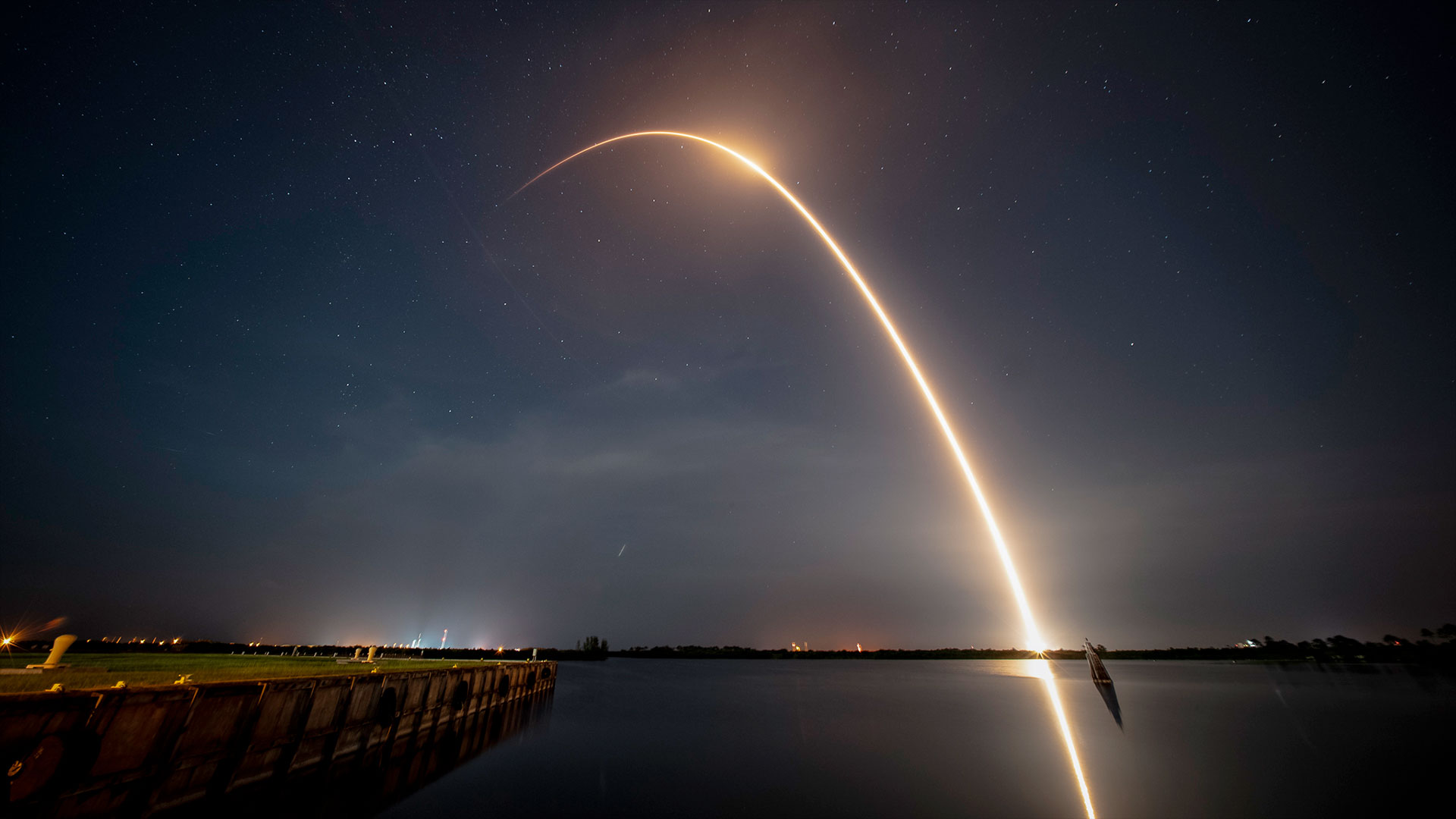Tiny star's violent outburst catches astronomers' attention — years late

Just like any small child, a tiny star had a huge yet unexpected temper tantrum.
The little star, which is only about 8% of the sun's mass, belched a huge "superflare" of X-rays. It's a strange thing to observe for astronomers, who thought a star that small couldn't create such a large emission in that wavelength of light.
This star is very diminutive by cosmic standards. Known as J0331-27, the star is an L dwarf, the category of star so small that each star's mass is just barely enough to allow for nuclear fusion. ("Failed stars" that don't meet the mass threshold are called brown dwarfs.)
Related: Our X-ray universe: amazing photos by NASA's Chandra X-Ray Observatory
The strange flare also went unnoticed for more than a decade after it happened on July 5, 2008. It was caught by the European Space Agency's XMM-Newton X-ray observatory, but lay in an archive until a search turned up the event. It was quite the event, too, since the little star sent out more than 10 times the energy of the most intense flare sent out by our own sun.
"This is the most interesting scientific part of the discovery, because we did not expect L-dwarf stars to store enough energy in their magnetic fields to give rise to such outbursts," Beate Stelzer, a co-author on a new paper describing the event and an astrophysicist at Germany's Institute for Astronomy and Astrophysics and at Italy's Astronomical Observatory of Palermo, said in an ESA statement.
Scientists don't really understand how this flare could have arisen. L dwarfs only have a surface temperature of about 3,320 degrees Fahrenheit (1,830 degrees Celsius). That's about a third of the sun's surface temperature of 10,340 F (5,730 C). At the lower temperatures of an L dwarf, astronomers' models suggested that there isn't enough energy to fuel a star's magnetic field, which would govern the flare. "We just don't know — nobody knows," Stelzer said of why the event happened.
Breaking space news, the latest updates on rocket launches, skywatching events and more!
But the astronomers did point out that XMM-Newton observed the star for 40 days and only saw the one flare, which suggests that an L dwarf takes a longer time to build up energy than the sun does — perhaps contributing to the size of the flare.
"A number of similar stars had been seen to emit super flares in the optical part of the spectrum, but this is the first unambiguous detection of such an eruption at X-ray wavelengths," ESA added in the same statement. "The wavelength is significant because it signals which part of the atmosphere the super flare is coming from: optical light comes from deeper in the star's atmosphere, near its visible surface, whereas X-rays come from higher up in the atmosphere."
A paper based on the research was published Feb. 12 in the journal Astronomy & Astrophysics.
- Stunning photos of solar flares & sun storms
- Solar blast! Sun surprises with 3 powerful flares (video)
- First new sunspots in 40 days herald coming solar cycle
Follow Elizabeth Howell on Twitter @howellspace. Follow us on Twitter @Spacedotcom and on Facebook.
OFFER: Save at least 56% with our latest magazine deal!
All About Space magazine takes you on an awe-inspiring journey through our solar system and beyond, from the amazing technology and spacecraft that enables humanity to venture into orbit, to the complexities of space science.
Join our Space Forums to keep talking space on the latest missions, night sky and more! And if you have a news tip, correction or comment, let us know at: community@space.com.

Elizabeth Howell (she/her), Ph.D., was a staff writer in the spaceflight channel between 2022 and 2024 specializing in Canadian space news. She was contributing writer for Space.com for 10 years from 2012 to 2024. Elizabeth's reporting includes multiple exclusives with the White House, leading world coverage about a lost-and-found space tomato on the International Space Station, witnessing five human spaceflight launches on two continents, flying parabolic, working inside a spacesuit, and participating in a simulated Mars mission. Her latest book, "Why Am I Taller?" (ECW Press, 2022) is co-written with astronaut Dave Williams.
-
rod ReplyAdmin said:Just like any small child, a tiny star had a huge yet unexpected temper tantrum.
Tiny star's violent outburst catches astronomers' attention — years late : Read more
"A number of similar stars had been seen to emit super flares in the optical part of the spectrum, but this is the first unambiguous detection of such an eruption at X-ray wavelengths," ESA added in the same statement."
I did some more study on this L dwarf super-flare report. The star is apparently about 0.08 solar masses and some 240 pc distance from Earth. The attached PDF report from ArXiv.org states "Time-domain astronomy has uncovered a new class of stellar ‘superflares’ with bolometric energies higher than 10^33 erg (Maehara et al. 2012), events that significantly influence planetary habitability (Armstrong et al. 2016; Lingam & Loeb 2017) and may have been imprinted on meteoritic chemical abundances in our own solar system (Mishra & Marhas 2019)...These bursts are comparable to the strongest flares in FGKM stars, and are remarkable given that most tracers of quiescent magnetic emission (H alpha and X-ray) decline in the L dwarf sequence (Schmidt et al. 2015; Stelzer et al. 2006a).", ref - EXTraS discovery of an X-ray superflare from an L dwarf
It seems spectral class MKGF stars can have very energetic flares, now L dwarfs too. This does impact the habitability of such stars to support livable exoplanets. We live on the Earth with a very stable Sun compared to many stars being uncovered in astronomy today. The L dwarf in this report, if it has a 1 day rotation period could spin some 4.56 km/s or faster vs. the Sun 2 km/s. Other stars that emit very energetic flares commonly spin fast too. Something to ponder in the grand design of the universe and how the Earth is very habitable today with an abundance of life. -
Alicia Simpson My first thought is that something hit the surface, something with a bit of hydrogen, like a comet.Reply -
Francis Graham Zy Zhen, Junxian Wang, and Keely and S.L. Finkelstein, who published their analysis in 2010 as “X-ray Properties of the z ~ 4.5 Lyα Emitters in the Chandra Deep Field South Region” The Astrophysical Journal 718(1):52, report an object of this designation is a quasar. Is this a misidentification?Reply -
rod ReplyFrancis Graham said:Zy Zhen, Junxian Wang, and Keely and S.L. Finkelstein, who published their analysis in 2010 as “X-ray Properties of the z ~ 4.5 Lyα Emitters in the Chandra Deep Field South Region” The Astrophysical Journal 718(1):52, report an object of this designation is a quasar. Is this a misidentification?
It does not seem to be a misidentification. Here is something from the Abstract, "ABSTRACT We present the first detection of an X-ray flare from an ultracool dwarf of spectral class L. The event was identified in the EXTraS database of XMM-Newton variable sources, and its optical counterpart, J0331-27, was found through a cross-match with the Dark Energy Survey Year 3 release. Next to an earlier four-photon detection of Kelu-1, J0331-27 is only the second L dwarf detected in
X-rays, and much more distant than other ultracool dwarfs with X-ray detections (photometric distance of 240 pc). From an optical spectrum with the VIMOS instrument at the VLT, we determine the spectral type of J0331-27 to be L1. The X-ray flare has an energy of EX;F ~ 2 x 10^33 erg, placing it in the regime of superflares.", https://ui.adsabs.harvard.edu/abs/2020arXiv200208078D/abstract
The spectrum shows it is an L dwarf star determined to be about 0.08 solar mass and 240 pc distance or about 783 light-years distance. The QSO you mention, z is 4.5. The cosmology calculators show this object is 12.369E+9 light-years look back time from Earth but comoving radial distance of nearly 25E+9 light-years distance using the cosmological redshift interpretation based upon the Big Bang expansion model. http://www.astro.ucla.edu/~wright/CosmoCalc.html
An L dwarf star spectrum is not a QSO and the L dwarf is much closer to the solar system, based upon the published metrics.

